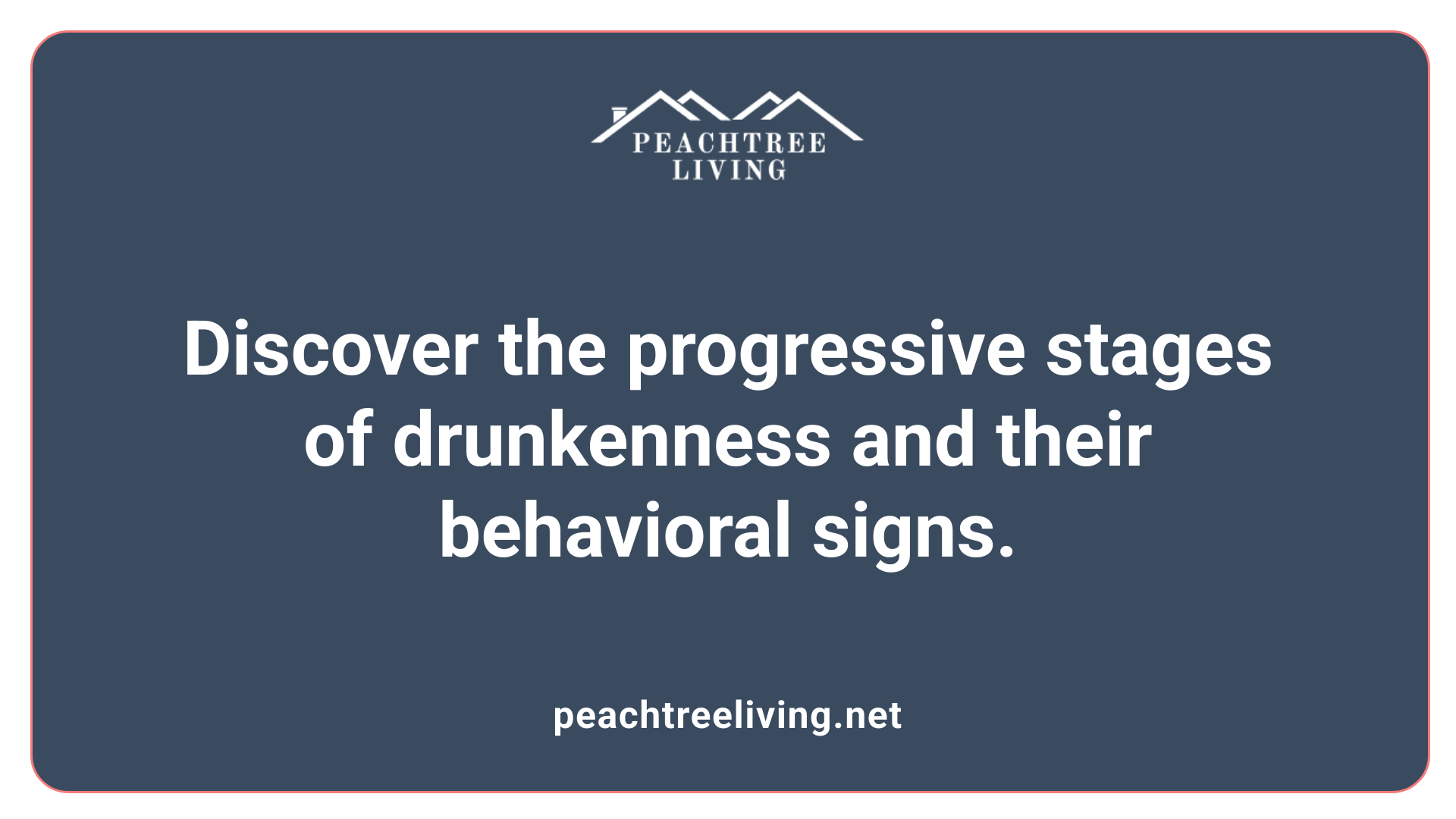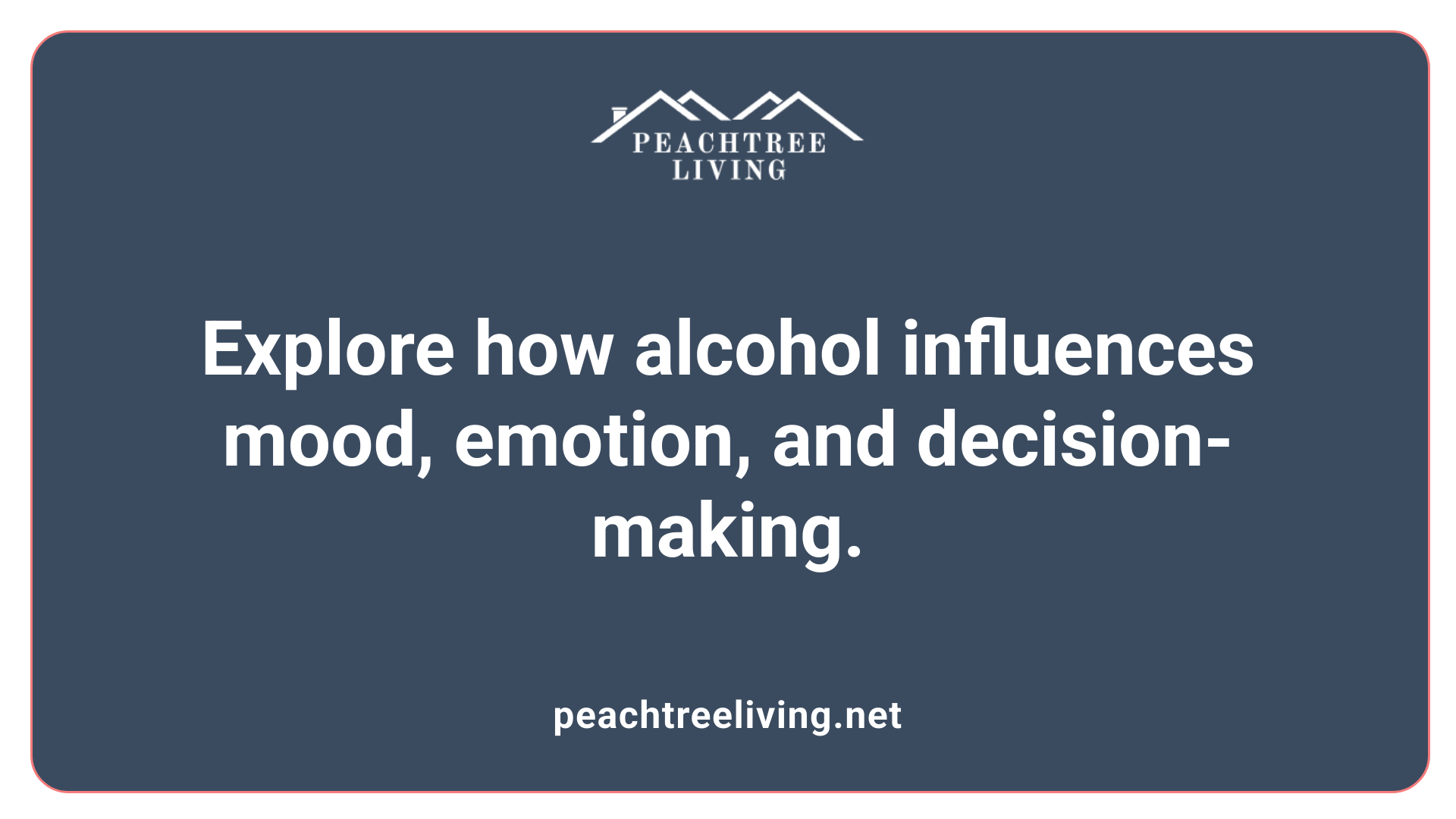Unraveling the Meaning and Consequences of Being Drunk
The state of being drunk, also known as intoxication, is a multifaceted condition influenced by various physiological, behavioral, and societal factors. This article explores what it truly means to be drunk, how to recognize it, its effects on the body and mind, and the broader implications for health, safety, and society.
Defining 'Drunk' and Its Usage Across Cultures
What is the meaning of being drunk?
Being drunk mainly indicates a state where alcohol has caused noticeable impairment to a person’s physical and mental abilities. When someone is drunk, they often exhibit slurred speech, unsteady movement, and poor judgment. This occurs because alcohol affects the central nervous system, slowing brain activity and inhibiting coordination.
As an adjective, 'drunk' describes a person affected by alcohol to the extent of losing control or being overwhelmed emotionally. It can also be used as a noun to refer to someone who is intoxicated or a person with a habitual tendency to drink heavily, sometimes called a 'drunkard'.
The word 'drunk' originates from Old English and has been part of many languages and cultures, with a rich array of slang and idiomatic expressions. Its usage varies across cultures but generally conveys a similar idea of temporary or continuous intoxication involving alcohol.
The experiences and distinctions between being tipsy, intoxicated, and an alcoholic
There are different stages and types of alcohol-related states. "Tipsy" is the mildest stage, usually happening after a few drinks, characterized by slight relaxation, increased confidence, and lowered inhibitions. This is often a temporary feeling that might include mild dizziness or slight impairment.
In contrast, being truly intoxicated or drunk involves more significant impairment—such as poor coordination, slurred speech, emotional swings, and difficulty thinking clearly. Higher blood alcohol content (BAC) levels deepen these effects, leading to confusion, loss of balance, or even unconsciousness.
Chronic alcoholism refers to a long-term condition where an individual habitually consumes large amounts of alcohol, leading to dependence. Such individuals might experience severe health issues, including liver disease and memory blackouts. Unlike occasional drunkenness, alcoholism often requires medical or psychological intervention.
Common informal expressions and cultural references
In everyday language, people often describe intoxication using humorous or vivid expressions. Phrases like "drunk as a skunk," "sloshed," "hammered," or "plastered" are common slang for different degrees of drunkenness.
Culturally, being drunk can be associated with certain behaviors or phenomena. For example, in social settings in many countries, alcohol consumption is linked with celebration, camaraderie, or relaxation. Conversely, excessive drinking is often stigmatized due to its health risks and social consequences.
Overall, understanding the term 'drunk' involves recognizing its origins, the different levels and types of alcohol effects, and the cultural context in which it is used. Being aware of these aspects helps promote responsible drinking and awareness of alcohol’s effects across diverse societies.
Physical and Behavioral Signs of Being Drunk

How can you tell if someone is drunk?
Understanding the signs of intoxication can help identify when someone is under the influence of alcohol. Early indicators include feeling tipsy, characterized by increased talkativeness, confidence, and a relaxed or warm feeling. As alcohol intake rises, physical and behavioral signs become more apparent.
Physically, a person who is drunk may exhibit unsteady movements, poor coordination, slurred speech, and blurred vision. Their balance may be compromised, leading to difficulty walking or standing properly. Blood alcohol concentration (BAC) levels are a useful measure; at around 0.03% to 0.06%, the individual might be considered 'tipsy' with mild effects such as increased confidence and slight impairments. When BAC reaches 0.08% or higher, symptoms are more severe, including lack of judgment, impaired reaction time, and poor motor control.
At higher BAC levels, more serious signs emerge. Confusion, dizziness, nausea, and vomiting are common, and in extreme cases, the individual could slip into stupor, coma, or face the risk of death. For instance, BAC levels above 0.20% are associated with significant impairment and dangerous health risks.
Behavioral changes are also prominent markers. These include mood swings, emotional instability, increased risk-taking, and sometimes aggressive or reckless behavior. Alcohol reduces inhibitions, which may lead to disorderly conduct or uncharacteristic actions. Severe intoxication can impair memory, lead to decreased alertness, and diminish the capacity for rational decision-making.
Recognizing these signs quickly is important for safety. Supportive care is vital if someone shows extreme signs like confusion, vomiting, or unconsciousness. Medical assessments often involve breathalyzer tests or blood tests to measure BAC accurately. Witness reports, along with physical signs, assist in diagnosing alcohol intoxication and determining the severity of the impairment.
Knowing the progression from mild to severe intoxication ensures both personal safety and the safety of others. It also emphasizes the importance of drinking responsibly and being aware of one's limits to avoid potentially life-threatening situations.
The Stages of Intoxication and Their Behavioral Effects

What are the stages of drunkenness and their behavioral effects?
Alcohol intoxication unfolds through several recognizable stages, each marked by distinct behavioral and physiological changes. Starting from the earliest signs, individuals often feel euphoric and more sociable, with decreased anxiety and increased confidence. This initial phase, known as the 'tipsy' stage, generally occurs with a blood alcohol concentration (BAC) of around 0.03% to 0.06%. People may talk more, feel warmer, and be more relaxed.
As blood alcohol levels rise, individuals enter the excitement stage at approximately 0.06% to 0.10% BAC. Here, perceptions become altered, and people might experience mood swings, impaired judgment, and slowed response times. Fine motor skills deteriorate, leading to clumsiness, slurred speech, and difficulty concentrating.
Progression to the confusion stage, with BAC levels around 0.10% to 0.20%, involves more significant impairment. Behavior can become unpredictable, with emotional outbursts, shouting, or flirtatiousness. Cognitive functions decline, making tasks like driving or operating machinery dangerous. Physical symptoms include nausea, vomiting, and blurred vision.
Beyond this, at BAC levels of approximately 0.20% to 0.30%, the stage shifts into stupor and profound confusion. Individuals may appear unresponsive, lose balance easily, and display a marked decline in coordination. Consciousness can be impaired, and the risk of alcohol poisoning increases.
Severe impairment occurs at even higher BAC levels, with deep unconsciousness, respiratory depression, and possible coma. At this stage, immediate medical intervention is critical, as the risk of death from respiratory failure or cardiac arrest becomes imminent.
Blood alcohol concentration (BAC) ranges for each stage
| Stage | BAC Range | Behavioral and Physiological Effects |
|---|---|---|
| Sobriety | 0.00% - 0.02% | No effects; normal mental and physical function. |
| Euphoria | 0.03% - 0.06% | Increased happiness, reduced inhibitions, mild relaxation. |
| Excitement | 0.07% - 0.10% | Euphoria persists; impaired judgment and coordination. |
| Confusion | 0.11% - 0.20% | Disorientation, emotional volatility, difficulty walking or speaking. |
| Stupor | 0.21% - 0.30% | Unresponsiveness, nausea, vomiting, severe motor impairment. |
| Coma | 0.31% - 0.40% | Loss of consciousness, dangerously slowed breathing, potential life-threatening condition. |
| Death | 0.41% and above | Severe respiratory depression, cardiac arrest; death possible. |
Behavior and physical changes at different levels
At lower BAC levels, the effects are mild, including relaxed mood and lowered inhibitions. As BAC increases, coordination diminishes, speech becomes slurred, and reaction times slow. Emotional states may swing unpredictably, with some becoming more aggressive or emotional.
In the confusion and stupor stages, motor skills are severely impaired, and the risk of accidents and injuries escalates. Nausea, vomiting, and difficulty walking are common. In extreme cases, individuals may become unresponsive, requiring urgent medical care.
Understanding these stages and their associated behaviors can help individuals recognize their limits, prevent alcohol poisoning, and seek timely help. Responsible drinking practices, such as knowing your personal tolerance and avoiding excessive consumption, are vital for safety.
Health Risks and Safety Risks of Being Drunk
What are the health and safety considerations of being drunk?
Being drunk significantly impairs judgment, coordination, and decision-making abilities. This impairment increases the likelihood of accidents and injuries, such as falls, car crashes, burns, or drowning. Additionally, excessive alcohol intake can cause immediate health crises like alcohol poisoning, which is a serious and potentially fatal overdose.
In the short term, signs of dangerous intoxication include dizziness, vomiting, slowed breathing, and loss of consciousness. These symptoms highlight the importance of recognizing one's limits and avoiding unsafe situations.
Long-term health effects from chronic heavy drinking can be severe. Regular excessive alcohol use is linked to various health problems, including cancers (such as liver, mouth, and throat), liver cirrhosis, cardiovascular diseases, mental health disorders, and dependence or addiction.
Alcohol also damages organs, weakens the immune system, and elevates risks of infections and chronic illnesses. Over time, it can contribute to blackouts, memory loss, and neurological damage.
From a safety perspective, it is vital to avoid driving or operating machinery while intoxicated. Knowing your personal alcohol tolerance is crucial to prevent dangerous overconsumption.
Certain groups, such as pregnant women, people with liver or heart diseases, and individuals on specific medications, should abstain from alcohol altogether due to heightened health risks.
Overall, understanding these risks helps promote responsible drinking and safeguard personal and public health.
Physiological Impact of Alcohol on the Body and Brain
How does alcohol affect the body and mind?
Alcohol impacts the body and brain in profound ways. When consumed, it acts primarily as a depressant on the central nervous system, slowing down brain activity and impairing essential functions such as coordination, judgment, reaction time, and memory. As alcohol enters the bloodstream, it influences various parts of the brain responsible for controlling emotions, behavior, and cognition.
In the brain, alcohol decreases activity in areas like the prefrontal cortex and impair the communication between nerve cells. This results in lowered inhibitions, mood swings, poor decision-making, and impaired coordination. The effects can range from mild euphoria at low blood alcohol levels to severe confusion, slurred speech, and even unconsciousness as levels increase.
Physically, alcohol affects multiple bodily systems. It can cause dehydration by increasing urine production, irritate the stomach lining leading to nausea and vomiting, and weaken bones over time. Alcohol also impacts the liver, which metabolizes about 8 grams of pure ethanol per hour; excessive intake can lead to liver diseases such as cirrhosis. Additionally, alcohol raises blood pressure, increases the risk of heart disease, and can interfere with hormone regulation. It compromises the immune system and increases susceptibility to infections.
Long-term vs short-term effects
Short-term effects of alcohol include impaired motor skills, slowed reflexes, distorted vision, and emotional volatility. In more severe cases, it can cause alcohol poisoning, which may lead to unconsciousness, coma, or death if untreated.
Long-term, chronic heavy drinking can cause lasting damage to the brain, resulting in cognitive decline, memory blackouts, and mental health issues like depression and anxiety. Liver damage is common, often progressing to cirrhosis. Alcoholism also increases the risk of certain cancers, neurological disorders, and cardiovascular diseases. Additionally, sustained alcohol use can lead to social and psychological issues, including dependence and strained relationships.
Impact on brain regions and functions
Research utilizing MRI scans reveals that intoxication leads to decreased activity in the prefrontal cortex, a region vital for self-control and decision-making. This decreased activity reduces self-awareness and may foster aggressive or risky behaviors. Alcohol impairs the functioning of other brain regions such as the occipital and temporal lobes, affecting vision and perception.
Furthermore, alcohol consumption hinders the brain’s ability to interpret facial expressions and threat cues, increasing the likelihood of risky or hostile interactions. The overall impact on brain health can be long-lasting, especially with repeated heavy drinking, potentially leading to irreversible damages and neurological deficits.
| System/Function | Effects of Alcohol | Additional Notes |
|---|---|---|
| Central Nervous System | Impairs coordination, decision-making, reaction time | Acts as a depressant |
| Brain Regions | Decreased activity in prefrontal cortex, visual and auditory processing areas | Leads to poor judgment, emotional lability |
| Liver | Metabolizes alcohol, risk of cirrhosis and fatty liver | Liver damage from chronic heavy drinking |
| Cardiovascular System | Increased blood pressure, risk of heart disease | Long-term alcohol use can cause cardiomyopathy |
| Gastrointestinal Tract | Gastric irritation, nausea, vomiting | Alcohol stimulates stomach acid production |
| Immune System | Reduced immune response | Increased susceptibility to infections |
Understanding these effects underscores the importance of moderation and awareness of one's limits. Recognizing the signs of intoxication and the potential dangers can help prevent accidents and health issues associated with alcohol use.
Psychological and Emotional Aspects of Being Drunk

How does intoxication affect mood and behavior?
Alcohol impairs mental and physical abilities due to its impact on the central nervous system. When someone is drunk, they often experience a range of behavioral and physical changes. Early symptoms at lower doses include mild sedation and poor coordination. As alcohol consumption increases, symptoms become more pronounced, including slurred speech, trouble walking, and impaired vision. At very high levels, intoxication can lead to dangerous health risks such as respiratory depression, coma, or even death.
Alcohol depresses the brain, affecting regions responsible for judgment, coordination, and reaction time. This results in decreased inhibitions, making individuals more expressive, talkative, or confident. Mood swings are common, and behavior can become reckless or aggressive. It can also cause emotional instability, with some individuals experiencing heightened feelings of joy or anger.
What does being 'drunk with' emotion mean?
The phrase 'drunk with' expresses being overwhelmed or overwhelmed by strong feelings such as joy, power, or passion. This state of emotional intoxication is somewhat analogous to physical drunkenness, where perception and control are compromised. For instance, someone might be 'drunk with happiness' after good news or 'drunk with anger' during a heated argument. These emotional states can distort judgment and decision-making processes, much like alcohol does physiologically.
How does alcohol influence decision-making and impulse control?
Alcohol's depressive effects on the brain impair regions involved in thinking and judgment. This leads to lowered inhibitions, decreased self-control, and increased impulsivity. As a result, intoxicated individuals are more likely to engage in risky behaviors, act recklessly, or make poor decisions without fully considering consequences.
Can intoxication lead to aggression or reckless actions?
Certainly. Decreased ability to interpret facial expressions and social cues, combined with lowered inhibitions, can increase the likelihood of aggressive or reckless acts. MRI studies have shown that alcohol decreases activity in the prefrontal cortex, which normally helps regulate impulse control and hostility. This loss of regulation can manifest as violent behavior or confrontational actions, especially in individuals predisposed to such tendencies.
| Aspect | Effect of Alcohol | Potential Outcomes |
|---|---|---|
| Mood Changes | Increased confidence or aggression | Mood swings, quarrels, or violence |
| Behavior | Recklessness and risk-taking | Dangerous activities, accidents |
| Decision-Making | Impaired judgment | Poor choices, substance abuse |
| Emotional Influence | Heightened emotions ('drunk with' feelings) | Overwhelm, intensification of passions |
Understanding these psychological and emotional effects can help individuals recognize their limits and avoid risky situations. Responsible drinking and awareness of how alcohol affects mood and decision-making are vital for safety and well-being.
Cultural, Legal, and Historical Perspectives on Drunkenness
 Understanding how society perceives and regulates drunkenness requires exploring legal, cultural, and historical contexts.
Understanding how society perceives and regulates drunkenness requires exploring legal, cultural, and historical contexts.
Legally, most countries set specific blood alcohol concentration (BAC) limits for safe driving. In the United States, for example, the BAC threshold is 0.08%. That means drivers with BAC levels above this are considered legally intoxicated and may face penalties, fines, or license suspension. Responsible alcohol consumption involves being aware of these limits to prevent accidents and legal issues.
Culturally, attitudes toward drunkenness vary widely around the world. In some societies, drinking is deeply integrated into social rituals, celebrations, and even religious ceremonies. For instance, wine in Europe has historically played a significant role in cultural identity. Conversely, other cultures emphasize sobriety, viewing drunkenness negatively, associating it with disorder or moral weakness.
Throughout history, references to drunkenness have appeared in religious texts, folklore, and literature. The Bible depicts drunkenness not only as a personal failing but also as a moral metaphor, highlighting its complex role in spiritual and moral narratives. In folklore, portrayals range from humorous to cautionary tales, reflecting society’s varied perceptions.
By understanding these perspectives, it becomes clear that drunkenness is not only a matter of individual choice but also intertwined with cultural values and legal regulations.
| Aspect | Details | Examples/Comments |
|---|---|---|
| Legal BAC limits | Defines intoxication for legal purposes | U.S. limit at 0.08%, varying by country |
| Societal attitudes | Varies from acceptance to disapproval | Social rituals vs. stigmatization |
| Historical references | Seen in religious and cultural texts | Bible stories, folklore, literature |
Recognizing these different viewpoints can help foster better understanding of alcohol use and guide responsible behavior.
Embracing Responsible Consumption and Awareness
Understanding what it means to be drunk is essential for ensuring personal safety, public health, and societal harmony. Recognizing the signs, effects, and stages of intoxication can help individuals make informed decisions, avoid health hazards, and comply with legal limits. While alcohol is deeply woven into many cultural practices, moderation and awareness remain key to enjoying its social benefits without falling into harmful patterns. Educating oneself about its physiological, psychological, and societal impacts fosters a more responsible approach to drinking, contributing to overall well-being and safety.
References
- What Does It Feel Like to Be Drunk? - Healthline
- What are the Different Stages of Being Drunk? - The Recovery Village
- Alcohol intoxication - Wikipedia
- DRUNK definition in American English - Collins Dictionary
- Tipsy vs Drunk: What is the Difference? | Step 1 Recovery Centre
- DRUNK | definition in the Cambridge English Dictionary
- What Does It Mean To Be Drunk? - Northstar Behavioral Health
- Drunk - Definition, Meaning & Synonyms | Vocabulary.com
- What is the Difference Between Drunk vs Tipsy? | Cassiobury Court

